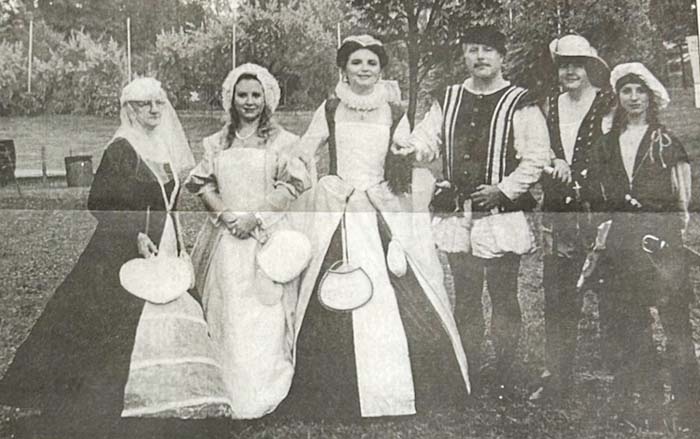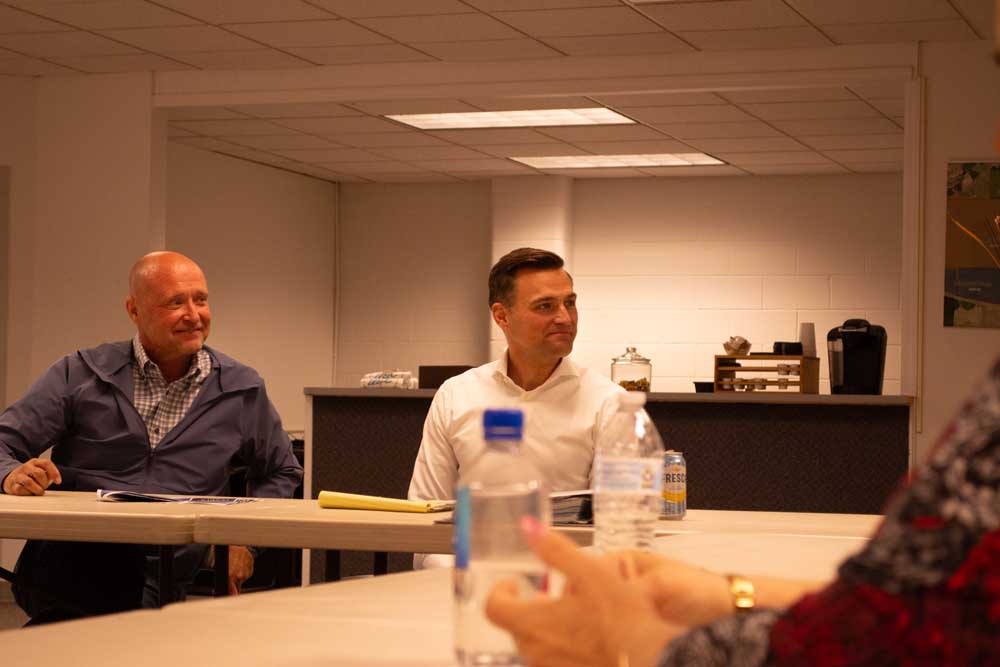Hermiston History: Hermiston seamstress creates stage costumes
Published 5:00 am Wednesday, March 27, 2024

- Longtime Hermiston resident Marie Walker, far left, researched and designed these costumes for the 1996 Pennsylvania Renaissance Fair. She also created costumes for Hermiston's Stage Struck Theatre.
25 YEARS AGO
Trending
March 30, 1999
After more than 50 years of crafting costumes for local dramas, Marie Walker was still going strong.
The 73-year-old Hermiston woman had designed costumes for the local Stage Struck Theatre since she moved to Hermiston at the age of 18.
Trending
“The first one (costume), my mother and I made for my tap dance recital in 1938,” she said. “I’ve been making them ever since.”
Lynn Mercer, director of Stage Struck Theatre productions, said Walker’s talents greatly benefitted the theater group.
“Costuming isn’t just being a seamstress,” Mercer said. “A lot is helping actors coordinate whatever can be gleaned out of their own closets that will work. Marie really is a great help.”
The costume design process, Walker said, included researching the time period and style. After sketching out her ideas and receiving the director’s approval, she began making the costumes from scratch, remodeling outfits or searching through the racks at Goodwill.
Walker said this could be painstaking, like when she hand-stitched more than 500 pearl and amber beads for a wedding dress. But in the end, she said it was always worth the time and effort to see how well the costumes accompanied the production.
50 YEARS AGO
March 28, 1974
More than 60 local officials and residents attended a U.S. Army Corps of Engineers meeting to hear about the preliminary plans for a second McNary Dam powerhouse.
Col. Nelson Conover explained that the tentative plan was to build the powerhouse in line with the existing one as well as add three to 12 generator-turbine units. Although there was no opposition to the plan, several individuals expressed concerns about water depletion.
“We have 160 deep wells in this area and they’re going to go dry,” O.W. Cutsforth, of Heppner, said.
Conover said a pre-authorization study would address these concerns. In addition, he said an irrigation study would come later in the planning process.
If this pre-authorization study was deemed sound, Conover said, detailed planning for the second powerhouse would not begin until 1976. He estimated that construction would follow within the decade and potentially last up to four years.
Conover expressed enthusiasm for the project. He estimated it would provide employment for about 300 people and greatly develop the area.
75 YEARS AGO
March 31, 1949
Although not laden with gold as the California valleys, Umatilla County sure had good dirt. Merrill Oveson, superintendent of the Pendleton Branch Station, said the county represented the soil types and rainfall variations of 60-70% of wheatland in Oregon, Washington and northern Idaho.
For this reason, it was selected to host soil conservation tests. Financed by federal and state funds, this study would examine soil erosion and fertility control.
“The rapidly accelerating rate of erosion from the Pacific Northwest wheatlands was the motivating factor that directed the setting up of these experimental units,” Overson said.
The first experiment farm, which had already been laid out, consisted of 80 acres on the Jim Hill ranch near Helix. Another farm was planned for the Ritzville series just east of Stanfield, while the other two would be in Pendleton. All four farms, Overson said, should be established and starting trials within a year.
90 YEARS AGO
March 29, 1934
Urged by friends and supporters of the Columbia River project, E.P. Dodd, of Hermiston, was considering running for state governor.
Dodd had been a leading advocate of improving the upper Columbia River and its tributaries, proclaiming this downhill haul to be the greatest asset of the state. By utilizing natural resources, developing industries like transportation and providing jobs, Dodd claimed this project demanded the first attention of Oregon residents.
Dodd’s experience and qualifications included serving as the Oregon vice president of the Inland Empire Waterways Association and as executive secretary of the Tri-State Development League, withh membership spanning more than 28 counties in three states. Dodd was a past secretary of the Columbia Highway Water Grade Association, served two terms in the Oregon Legislature and was a past president of the Hermiston Commercial Club.
With such extensive credentials, Dodd gathered substantial support across the state but was withholding his final decision to run for governor until April 3.









